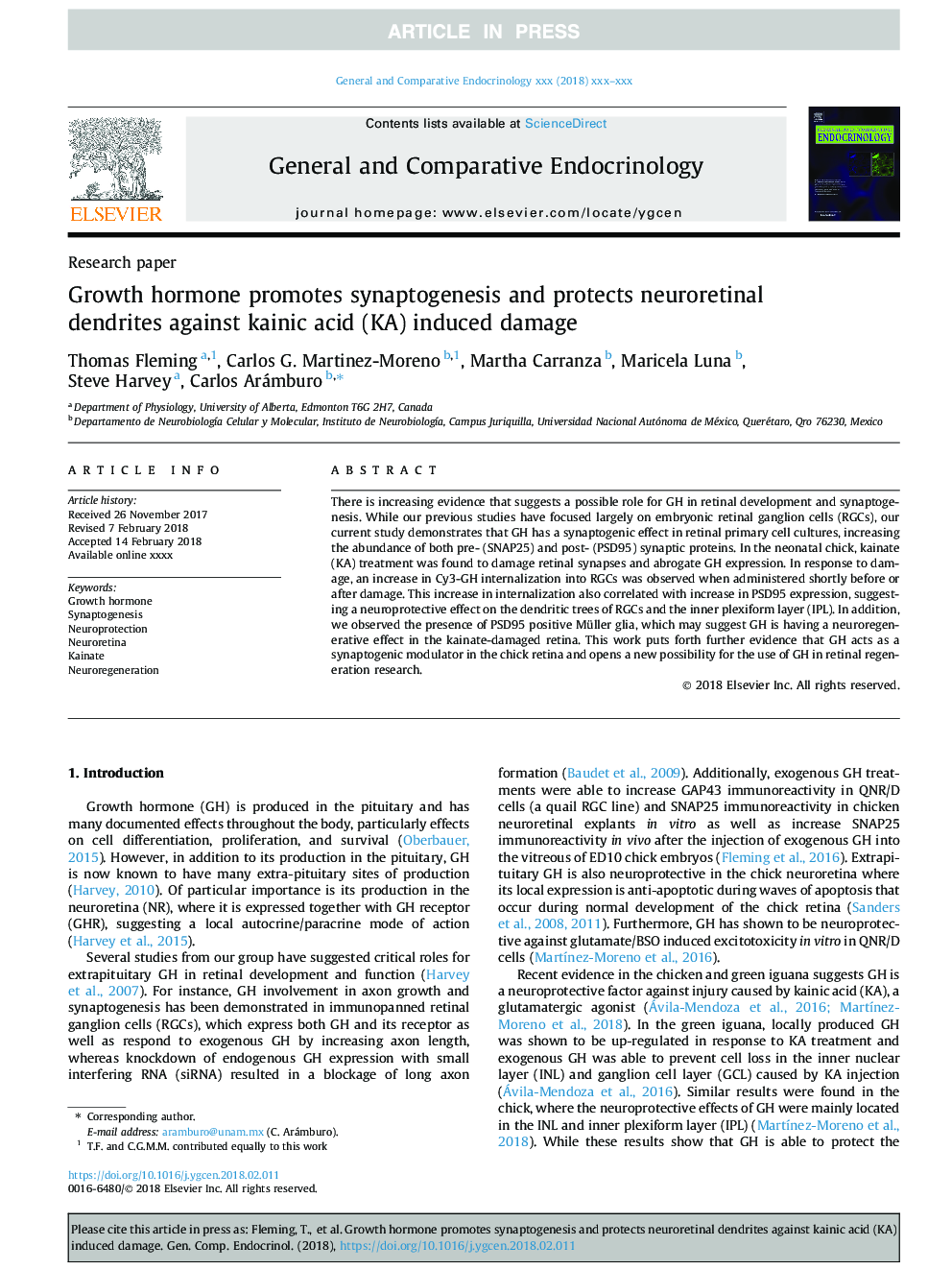| Article ID | Journal | Published Year | Pages | File Type |
|---|---|---|---|---|
| 8630737 | General and Comparative Endocrinology | 2018 | 10 Pages |
Abstract
There is increasing evidence that suggests a possible role for GH in retinal development and synaptogenesis. While our previous studies have focused largely on embryonic retinal ganglion cells (RGCs), our current study demonstrates that GH has a synaptogenic effect in retinal primary cell cultures, increasing the abundance of both pre- (SNAP25) and post- (PSD95) synaptic proteins. In the neonatal chick, kainate (KA) treatment was found to damage retinal synapses and abrogate GH expression. In response to damage, an increase in Cy3-GH internalization into RGCs was observed when administered shortly before or after damage. This increase in internalization also correlated with increase in PSD95 expression, suggesting a neuroprotective effect on the dendritic trees of RGCs and the inner plexiform layer (IPL). In addition, we observed the presence of PSD95 positive Müller glia, which may suggest GH is having a neuroregenerative effect in the kainate-damaged retina. This work puts forth further evidence that GH acts as a synaptogenic modulator in the chick retina and opens a new possibility for the use of GH in retinal regeneration research.
Related Topics
Life Sciences
Biochemistry, Genetics and Molecular Biology
Endocrinology
Authors
Thomas Fleming, Carlos G. Martinez-Moreno, Martha Carranza, Maricela Luna, Steve Harvey, Carlos Arámburo,
